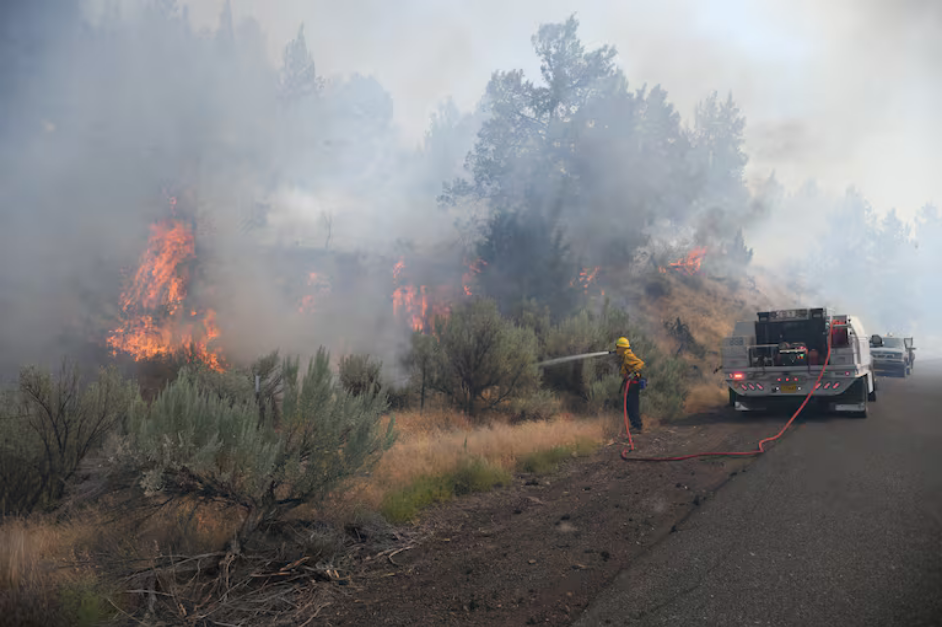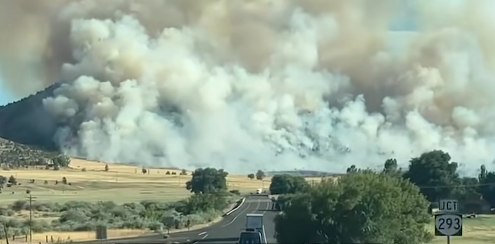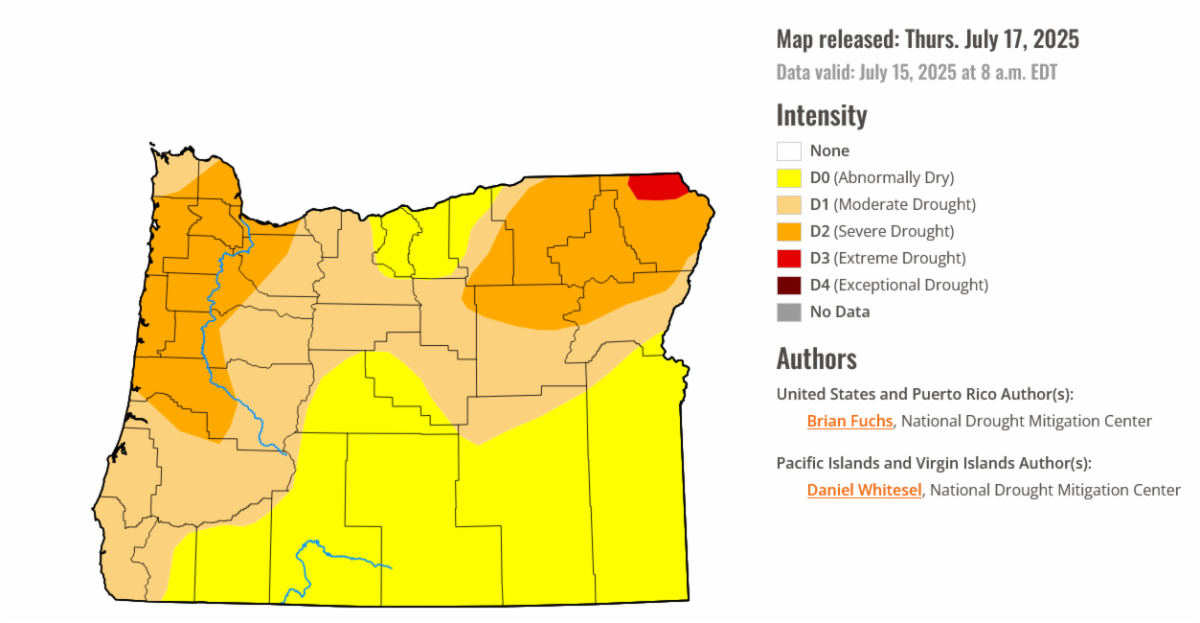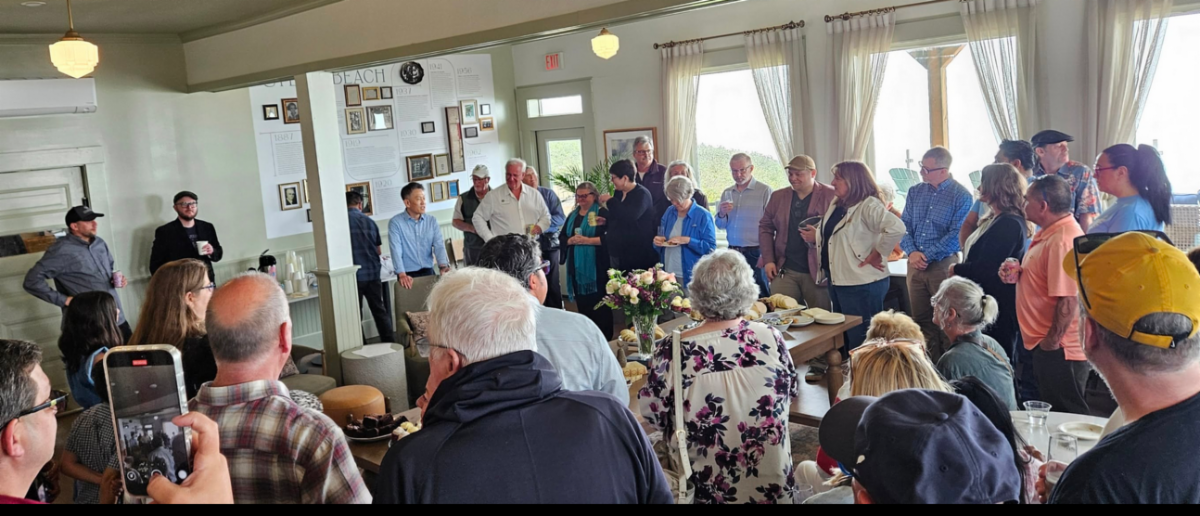By Representative David Gomberg, House District 10
7/21/2025
Dear Friends and Neighbors,
We will soon observe a sad anniversary.
Five years ago next month, fires raged across Oregon, forever changing communities and lives.
Since the Labor Day Fires, I have worked to be a leading voice for wildfire recovery in Lincoln County and statewide. I got millions to replace fire damaged water systems, helped cut red tape to fund housing for fire survivors, passed legislation so homeowners would not be taxed on houses that had burned down, waived penalties and interest on late property tax payments, exempted wildfire recovery from construction excise taxes, supported fire-impacted school districts, and secured funds to gravel and grade damaged roads throughout Otis. After checking with ethics officials to confirm I had no conflict, I also worked to repair four roads in my own neighborhood compromised by heavy logging and debris removal vehicles.
I have also worked to improve disaster and resilience education and preparation, to strengthen our public safety infrastructure, and to help our coastal hospitals expand their water and generator fuel reserves.
Oregon received over $400 million to help recover from the 2020 wildfires, and five years later, less than 10% has been allocated. As Willamette Week wrote, “Congress approved a mammoth disaster relief grant to help Oregonians recover from the destructive 2020 wildfires, records show that more than 90% of the money remains unspent, even as hundreds of families await relief.” OPB on Think Out Loud asked state agency directors, “Something like 10% of this money has been spent so far. So how do you explain this delay?”
Oregonians expect legislators to step up when state agencies make things harder rather than easier, and I have persistently done exactly that.
In one example, Sheila Stiley, Director of Northwest Coastal Housing, recognized “the importance of State Representative David Gomberg’s persistent advocacy … (and) thanked Representative Gomberg for his relentless legislative work in securing the previously earmarked disaster recovery funding for coastal communities”.
I am raising these matters now because Oregon is again facing a daunting fire season.
The threat of wildfires across the Northwest will escalate through the summer, extended forecasts show, due to extreme high temperatures. In response, Governor Tina Kotek is declaring a state of emergency across Oregon, meant to mobilize state and federal agencies and resources to prevent and respond to fires.
Governor Kotek made the declaration on Wednesday in an executive order, following six emergency declarations for individual fires just in the last two weeks. Most of the nearly 60 active fires in the state are in southern Oregon. The statewide emergency will remain in effect until the governor either determines that the threat has significantly receded, the fire season officially ends, or until the end of the year.
The declaration directs state agencies and the National Guard to collaborate on wildfire response and prevention by sharing personnel, equipment, and resources. It also directs those agencies and Guard troops to meet requests coming from the state’s primary fire agencies — the Oregon Department of Forestry and the State Fire Marshal — and local and tribal governments.
The state’s fire dashboard lists 58 active wildfires that have so far burned more than 54,500 acres. Many of the fires are contained. Nearly half of the fires ignited due to natural causes, while the cause is still undetermined for most of the others. Ten fires so far have been determined to be human-caused.
More than 2,200 Oregonians at nearly 900 addresses are currently in an evacuation zone, according to the state fire dashboard.
Much of this report came from the Oregon Capitol Chronicle.
This legislative session, which ended in June, the Legislature approved a measure to tax oral nicotine products and tap the interest on Oregon’s rainy day savings account to commit money toward wildfire mitigation efforts. Most agreed the measure, which was projected to generate about $43 million per year, wouldn’t be enough. I have said before that the connection between this new tax and wildfires seems awkward. But I will add I’m pleased to see a dedicated source of revenue for the ongoing and serious challenge of fire response. A more interesting suggestion I heard last week was to tax fireworks sales. That idea, I’m sure, will be more controversial.
Oregonians who believe they’ve been charged excessive prices or fees for essential goods and services during a wildfire emergency should report those claims to the Oregon Department of Justice Consumer Protection Services here.
|
The Cram Fire east of Madras has grown to the largest wildfire in the U.S. so far this year.
|
|
| In a series of declarations related to the wildfire threat, but with other broad implications as well, Governor Kotek announced that two Oregon Counties, including Lincoln, are officially in a drought. This is Lincoln County’s fourth official drought in seven years.
While mostly symbolic, the declaration allows water rights holders to make requests to the Oregon Water Resources Department for drought-related emergency tools like water use permits, expedited review processes, and water well repair and replacement.
According to the U.S. Drought Monitor, Lincoln County has been experiencing moderate drought since May 27 and severe drought since June 17, the Governor’s office said in a news release. Drought metrics also indicate that conditions have been present in the county over the last three to six months. Additionally, below normal precipitation, above normal temperatures, streamflow, and soil moisture conditions further indicate persistent drought conditions in Lincoln County.
While the coast gets several feet of rain between November and February, rainfall this spring was much below average. And June’s rainfall, which is critical to good stream flows, was a third of normal, according to rain gauges on the coast. The relatively low elevation of the Coast Range precludes meaningful snowmelt in the summer months, so without precipitation, the area’s streams and moisture in the soil deplete quickly.
Water is crucial to communities for everything from drinking, bathing, and washing to industries reliant on it for processing everything from lumber to seafood, and is also crucial to wildlife and agricultural crops.
The Siletz River was flowing at just 22 percent of its average on June 16. The cities of Siletz, Newport, Toledo, and the Georgia Pacific paper mill all have water rights on the Siletz.
Read more here and here in the Lincoln County Chronicle.
The county is encouraging residents to visit the Mid-Coast Water Consortium website for more drought information and tips for saving water. |
|
As of June 10, 51 percent of Oregon was experiencing abnormally dry conditions, according to the U.S. Drought Monitor, and more than 17 percent of the state is in moderate drought.
|
| I expect that sometime between now and Labor Day, your legislature will return to Salem in Special Session to address transportation funding in Oregon.
As regular readers know, the regular 2025 session failed to resolve shortfalls in transportation funding despite consideration of several detailed and long-debated proposals. The huge and complex ODOT budget silos funds into categories depending on the source of those funds. Some taxes are dedicated to mass transit. Some federal dollars are committed to specific projects. Half of the Highway Trust Fund is committed to local government. That makes it impossible to move money around.
Road maintenance at both the state and local level is largely funded by gas taxes. When people drive less or use cars that don’t rely on gasoline, gas tax revenue declines. At the same time, the cost of road repairs is going up.
I was at the table in June when we negotiated a $40 million “belt tightening” for ODOT.
An initial version of House Bill 2025 would have raised around $14.6 billion over a decade through higher gas taxes, a new tax on car sales, an increase in registration fees, and more. Much of the money would have been shared with city and county road departments that are also warning of dire shortfalls. But Republicans and a handful of key Democrats said the proposal was too expensive. A reduced proposal was suggested. That didn’t have votes either. When it became clear a major road-funding package didn’t have support, legislative leaders and the Governor scrambled in the final day of session to pass a stop-gap bill to avoid cuts at ODOT.
When the final proposal failed to reach a vote, the Legislature adjourned and ODOT started executing layoff plans.
Nearly 500 state employees received layoff notices this month. All told, state transportation leaders informed 483 workers – roughly 10% of the agency’s workforce – that their jobs will go away at the end of July. Governor Kotek said that more layoffs are expected early next year unless lawmakers act to find more money.
ODOT is also planning to close 12 road maintenance outposts around the state. Agency leaders say they plan to scale back pothole repairs, road striping, litter pickup, snow plowing and other services as they work to close a $354 million funding gap.
The last proposal in Salem that failed to advance was a 3-cent increase in gas taxes. I well understand that costs are up on everything, and no one likes to pay more in taxes. But I also worry that this winter, as fog lines fade, potholes proliferate, snow and ice accumulate, and response to slides or accidents is slower, highway safety may become much more important to most Oregonians.
Too many accidents are occurring on our local roads, and too many lives are being lost.
A special session would require leadership to first come up with a workable funding plan and agreement from both parties to at least show up. The logistics will prove tricky in a busy summer season when many lawmakers have vacations planned or work commitments for their non-legislative jobs. Even the Capitol building has a scheduling conflict. It is completely shuttered until August 10 as part of a years-long renovation project. That means lawmakers can’t convene there and might have to seek another location, likely in Salem.
Read more at OPB. |
|
OPB file photo by Julie Sabatier.
|
|
| Over the July 4th weekend, while Oregonians were celebrating with friends and family, Congress passed what the Trump Administration is calling the “Big Beautiful Bill.” While some may find much to celebrate in the measure, I’m concerned that many aspects will be devastating for Oregonians. It includes massive tax reductions for billionaires, paid for by slashing health care, food assistance, climate investments, and support for rural communities.
Here’s what the bill does:
- Cuts Medicaid funding, putting health coverage at risk for up to 280,000 Oregonians. One in three Oregonians relies on the Oregon Health Plan, including half of the children in our state.
- Slashes food assistance, including $230 billion in cuts to SNAP, a program that 1 in 6 Oregonians rely on to feed their families.
- Eliminates key clean energy tax credits, reversing progress on climate change at a time when our communities are already feeling the effects.
- Ends graduate student loan support and reshapes Pell Grants in ways that hurt low-income students.
- Permanently locks in Trump-era tax cuts for the ultra-wealthy, while throwing in short-term tax breaks to try and make the deal more attractive at first for working families.
These changes hit rural Oregon especially hard. More than 25% of Lincoln County residents rely on Medicaid. In counties like Malheur, Klamath, and Harney, that number rises to more than 40% and will have devastating impacts.
We are already working at the state level to protect critical services and shield Oregonians from the worst impacts of this bill. But we won’t be able to make up the full difference—these cuts will lead to real harm. |
|
| That’s the news for this week. And yes, I’m continuing to travel the district almost every day. Highlights of the past week included a ribbon cutting at the Silvia Hotel in Nye Beach, lunch with Jeff and Mary Schons, owners of the Pelican Brew Pub, live music at Beachchrest, and a thoughtful conversation with Oregon Secretary of State Tobias Read on the Gomberg deck. |
|
| In the next few days, I’ll join the Oregon Coast Community College Foundation annual meeting, attend a Lincoln City Chamber luncheon, and host a table for the Fisherman’s Wives Homeport Dinner in Newport.
At 9 a.m. on Thursday, July 24, I’ll be at the College’s North County Center in Lincoln City to welcome Clackamas Community College President Dr. Tim Cook, who is running across the entire state of Oregon to raise funds and awareness for student basic needs.
Good things are happening across our district, and I relish the opportunity to be part of them. |
email: Rep.DavidGomberg@oregonlegislature.gov
phone: 503-986-1410
address: 900 Court St NE, H-480, Salem, OR, 97301
website: http://www.oregonlegislature.gov/gomberg
|







